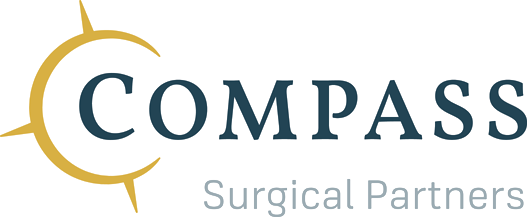Why Smart Health Systems Are Investing In Cardiovascular ASCs
Hearty changes are ahead. Health systems looking to pump new options into their outpatient surgery service lines are looking hard at cardiovascular ambulatory surgery centers. Here are six reasons why:
1. Cardiovascular procedures are moving to ASCs.
Commercial payers have been reimbursing ASCs for CV procedures not yet on Medicare’s Covered Procedures List (CPL). CMS is following the trail that commercial payers have blazed, recently adding diagnostic and interventional coronary procedures, peripheral vascular interventions and placement of pacemakers and defibrillators to the ASC CPL. The proposed CPL for 2024 did not add any CV procedures, but experts anticipate that more CV codes will make the list in upcoming calendar years.
The COVID-19 pandemic pushed patients, providers, and payers to avoid inpatient stays if they could, particularly for electrophysiology (EP) patients. Positive outcomes during the pandemic strikingly demonstrated that outpatient EP procedures are an excellent option for many patients. EP procedures aren’t on the CPL list yet, but observations during the pandemic give providers good reasons to argue that they should be.
Patient preferences are accelerating the growth of CV ASCs. Price transparency data means that many patients understand they pay less out-of-pocket for most procedures, and many prefer ASCs for other reasons as well.
Expect cardiovascular procedures to move to ASCs like how total joint replacements and spine procedures have moved to ASCs in the recent past. By the mid-2020s, 33 percent of cardiology procedures will be performed at ASCs—a 23 percent increase from 2018, Becker’s forecasts. Single-specialty cardiac ASCs will see the most dramatic growth among all ASCs, Bain predicts.
2. Single-specialty cardiovascular ASCs incur lower anesthesia costs than ASCs in other specialties.
Anesthesia costs are rising dramatically for both hospitals and ASCs because there is a shortage of both physician anesthesiologists and certified registered nurse anesthetists. Just four years ago, an anesthesiology per diem daily rate in an ASC was about $1,800. By 2022, that rate had risen to between $2,200 and $2,600 per day, according to Modern Healthcare.
Single-specialty cardiovascular ASCs aren’t as affected by rising anesthesia costs as ASCs in other specialties. Most CV outpatient cases require only conscious sedation, which means that anesthesiology costs for the facility will be significantly lower in most states.
3. CV ASCs avoid sterile processing costs.
Most equipment for CV procedures is disposable, which means that a single-specialty cardiovascular ASC doesn’t have to build out and incur space, equipment, and staffing costs for sterile processing.
4. About 50 percent of your HOPD’s CV patients are good candidates for outpatient surgery in an ASC.
Cardiovascular procedures are becoming less invasive, which makes them easier to perform in ASC settings. A good example is diagnostic catheterizations and coronary interventions. In the past, CV surgeons would access the heart via the femoral artery in the leg. But now, CV surgeons perform transradial cardiac caths, which means they go in through the wrist.
Because many procedures are less invasive, their complication rates are lower and recovery times are quicker, making the procedures better suited for ASCs than they were in the past.
5. Patient migration is not a threat. It’s an opportunity.
Sometimes health systems hesitate to launch a CV ASC because they fear the ASC will siphon CV patients away from their HOPD service lines. But there is an opportunity, particularly for capacity-constrained health systems.
Remember, 50 percent of patients aren’t good candidates for ASC-based procedures because of obesity, smoking, diabetes, or other co-morbidities. Launching an ASC that can handle lower-risk patients can equip your HOPD to handle additional higher-risk patients. If you have both an HOPD and ASC caring for CV patients, you can maximize your market share and serve a diverse patient population optimally.
If a health system’s HOPDs are capacity constrained, adding a CV ASC can create some bandwidth. If you can migrate lower-risk, lower revenue procedures from HOPDs and into the new ASC, that migration frees up your hospital to take on higher volumes of complex interventions, heavy ablation procedures, and other cases that are higher risk and higher revenue.
Bonus: Developing a CV ASC is significantly less expensive than adding a new cardiac cath lab to your hospital.
6. A CV ASC can boost your health system’s efforts to recruit, retain and engage physicians.
An ambulatory surgery center can create and nurture physician alignment for your health system, as I explain in this related post.
Do you want to learn more? Check out these seven questions to jumpstart your analysis and set you on the path towards the CV ASC strategy that is best for your health system
The Compass team has collectively developed, built, and managed more than 30 cardiovascular ASCs, partnering with both health system and independent CV providers. If you want to explore how a partnership might benefit your healthcare organization, please contact us to arrange a time to talk.
Recent News
-
Bon Secours Mercy Health and Compass Surgical Partners Announce Grand Opening of World-Class Surgery Center in Greenville, South Carolina
-
Healthcare Trailblazers: The Compass Surgical Partners Journey
-
Proactive Payer Credentialing Preps Your New ASC for Financial Success
-
Advanced Joint and Spine Institute Orlando and Compass Surgical Partners Open World-Class Orthopedic Surgery Center
-
How Your Health System Can Win the CV ASC Market
Copyright © 2024 Compass Surgical Partners
Site Design by Swarm Interactive | Admin Login
